Sweet Basil ice cream
Basil? In ice cream? Can that be nice? The answer is a resounding “YES”!
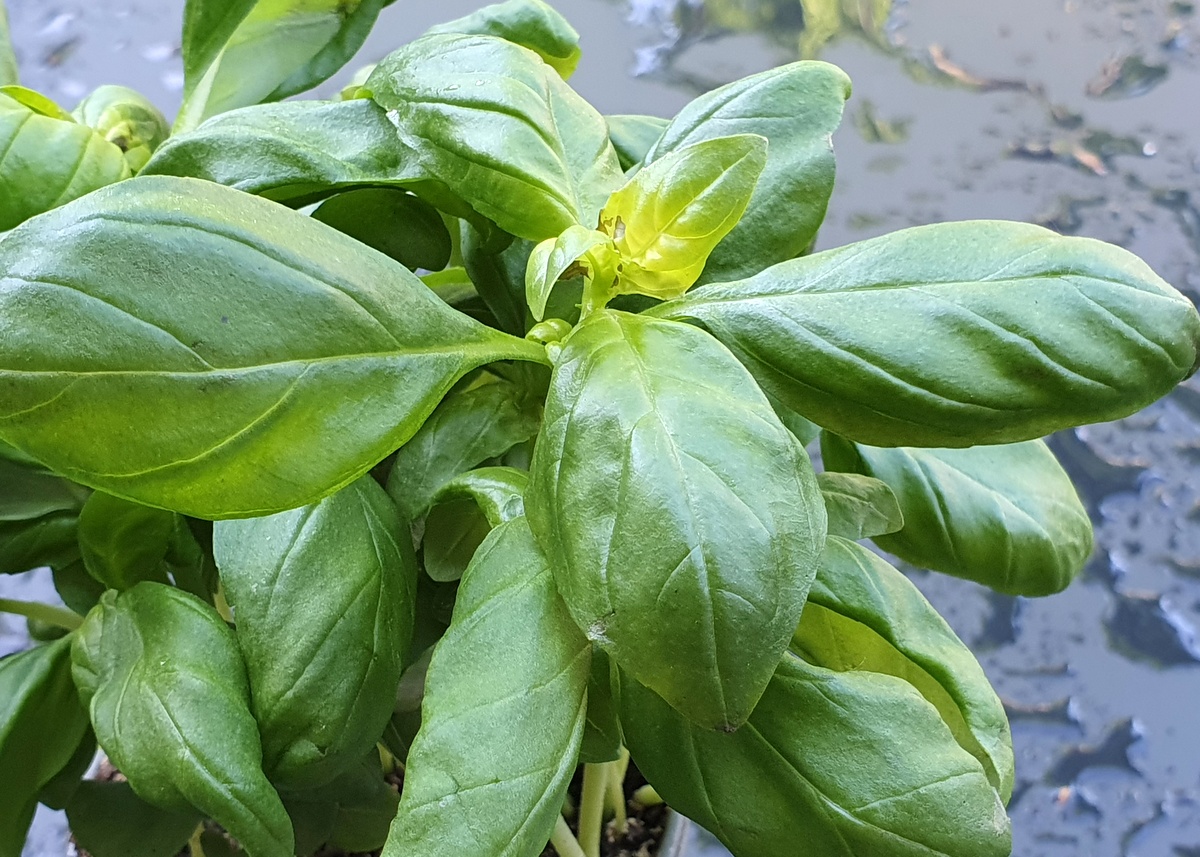
Basil (Ocimum basilicum) is a tender culinary herb from the mint-family. There are many varieties but the most common one is probably Sweet (or Genevese) basil.
Sweet Basil ice cream
Yes, I was pretty sceptic for a long time. I’m not overly fond of “savoury” [not-sweet] ice creams and I didn’t think that basil would be a very appetising ice cream flavour. Thanks to lyrical testimonies from good friends like Eleonora, however, I decided to give it a try. And my friends were right – basil turned out to be a great ice cream flavour, and tasted quite unlike what I had expected too.
Basil – a story of love, death and the gates of heaven
Culturally, basil has been a quite prominent herb: many traditions claim that it has therapeutic and tonic qualities, the Greek and several other Orthodox churches use basil to sprinkle or prepare holy water, and the ancient Greeks and Egyptians believed that basil would open the gates of heaven for those about to die. Yes, a pot of basil even figures prominently in a tale of tragic love (see below!) in Boccaccio’s 14th century classic The Decameron.

Poor Lisabetta in the literary classic “The Decameron”! Her family intends to marry her off to “some high noble and his olive trees”, but she falls for a poorer guy, Lorenzo. When her brothers find out, they murder him but his ghost tells Lisabetta all about it in a dream. She finds Lorenzo’s body and buries the head in a pot of basil which she tends to obsessively, eventually crying herself to death (The painting is Joseph Severn’s Isabella, or the Pot of Basil from 1877).
The recipe
I wanted a custard-based recipe, but basil is a delicate herb and quite heat-sensitive – how to “save it” through the cooking process?
Turning to the incomparable ice cream guru David Lebovitz, I found what I was looking for!
David’s recipe is a quite typical and straightforward custard one, based on egg yolks and 2 parts cream to 1 part milk. However, his idea for how to keep (at least half of) the basil out of the heated cooking is quite ingenious!
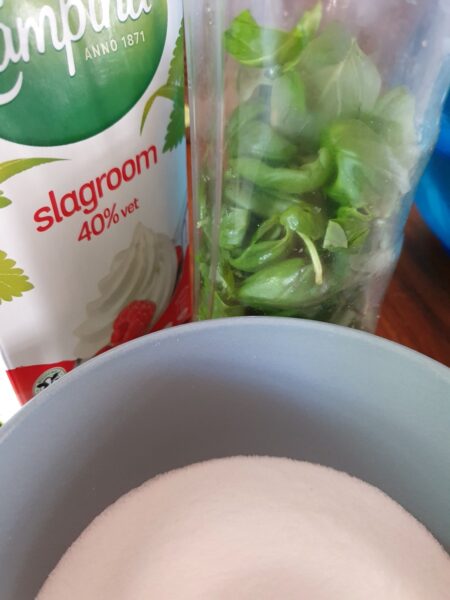
Starting out with some of the key ingredients – heavy cream, sugar and a bunch of fresh basil leaves!
Adapting the recipe, I – as usual – opted for a slightly quicker method when preparing the custard: instead of the “classic” staged approach with tempering of eggs etcetera in David’s recipe, I went for the more “modernista” approach and simply put all the ingredients – eggs and dairy – together in the saucepan from the very start. With good eggs and some whisking, this simplification should provide you with equally excellent results.
In short, we start by processing the basil leaves together with sugar and cream into a smooth pasty cream.
Only half of this mix will continue down into the saucepan with the milk and the egg yolks – the other half will be mixed with the remaining cream and remain “uncooked”, only to be fused with the rest of the [then cooked] base at the very final stage.
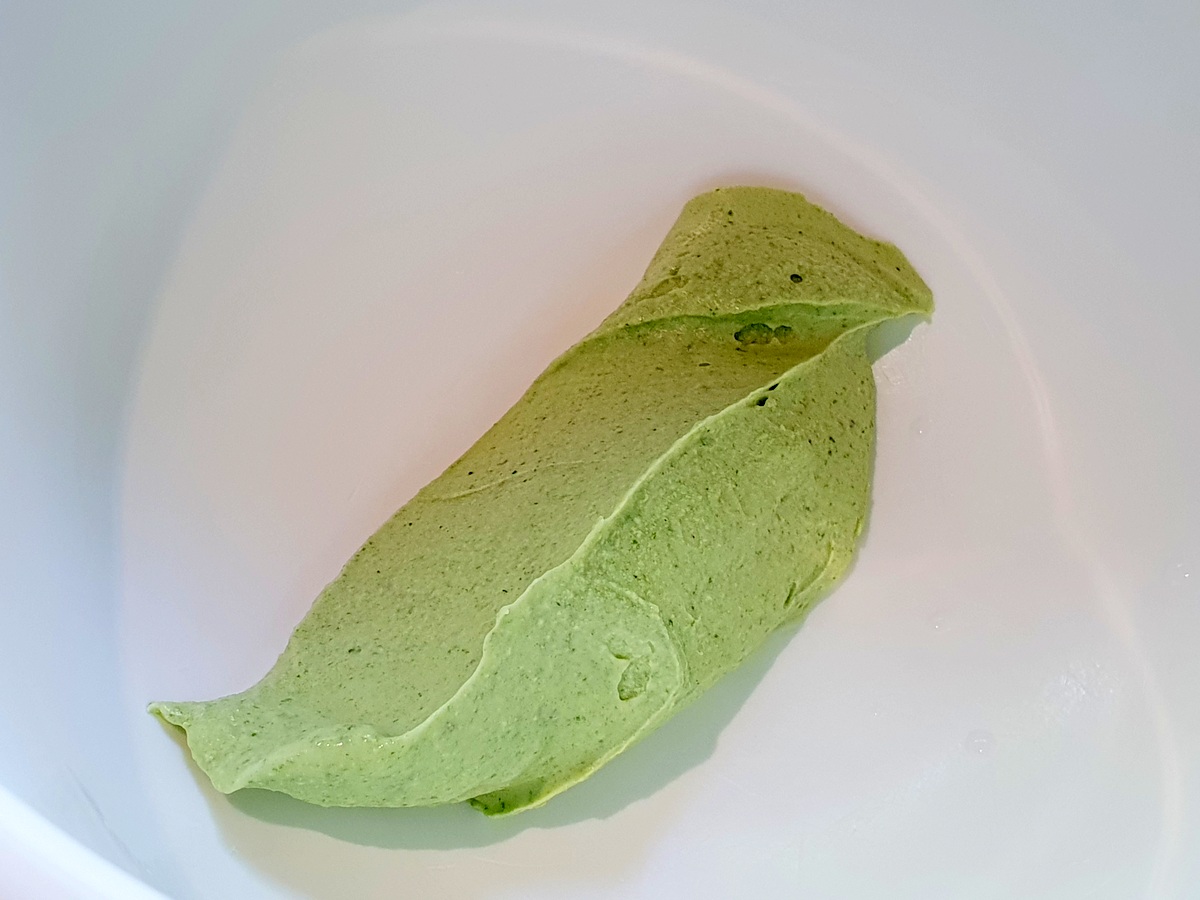
Looks quite tasty, doesn’t it? Half of the “basil paste” will be mixed with the remaining cream and set aside for now.
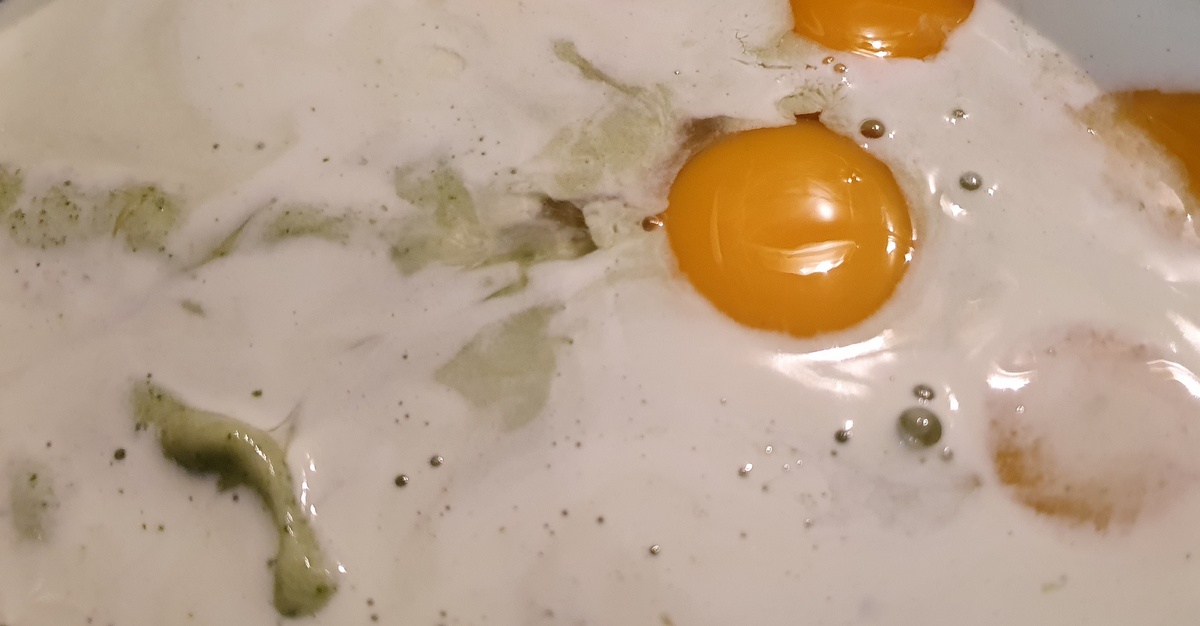
The other half of the “basil-cream paste” will be added to the milk and the egg yolks and cooked as any standard custard ice cream base.
Cooking the custard base is straightforward: While whisking along the way, bring the mix of egg yolks, milk and half of the basil-cream paste (along with a pinch of salt) up to the so-called Nappe-stage (about 82-84º Celsius /180-183 º F): at this point, the egg yolks contribute what they can in terms of stabilisation and the base should also be duly pasteurised.
Take off from the heat and mix the cooked base with the remaining cream and basil-cream you set aside before. Then add the lemon zest to this base.
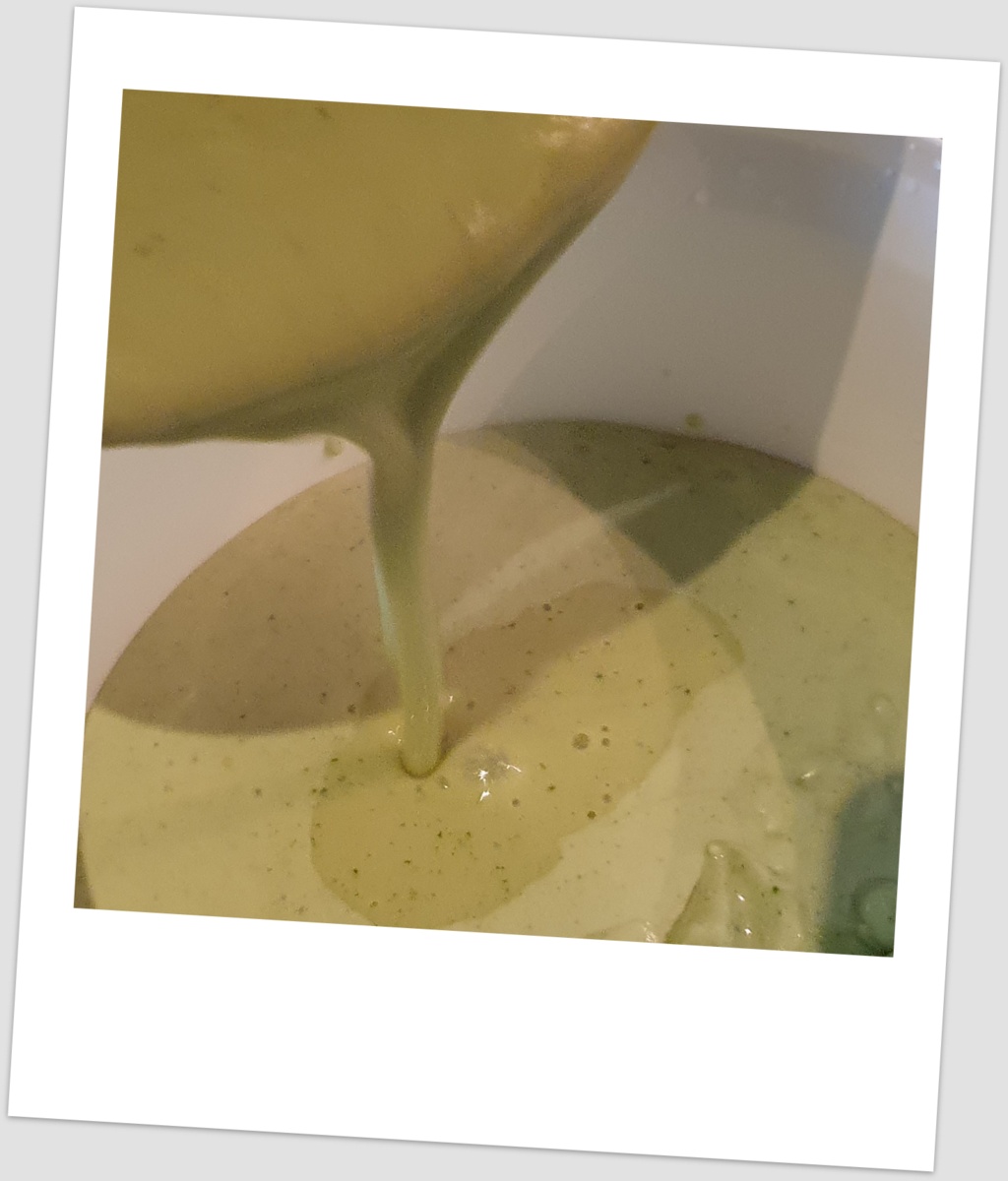
The custard base has cooked sufficiently, and we will finally add the remaining basil-paste-with-cream we set aside earlier.
As usual, make sure that the base has cooled down and preferably also chilled for a few hours or over night before churning. The cooler the base, the quicker your base will turn into ice cream … and preventing the formation of pesky, large ice crystals!
Basil – a surprising and very pleasant ice cream experience
Being used to basil in “ordinary” cooking, I had no idea that sweet basil ice cream would taste so sweet and nice! The particular “foody” basil-flavour many of us are so used to changes character when mixed with the sweetness of sugar and turned into ice cream. Several friends have had difficulties to correctly guess the flavour – while all agreeing that it tastes deliciously – and I don’t blame them!
So how to describe it? “Tasty, mild and smooth” comes to my mind, but those words don’t really tell much about the flavour itself, do they? So my best recommendation for you is to get hold of a pot of fresh basil and make the ice cream yourself! You won’t be disappointed, and if you’re really lucky, perhaps you’ll even feel like the gates of heaven are opening up when you have a taste 😉
- about 25 gram of packed fresh basil leaves (about 1 pot's worth)
- 200 ml (3/4 cup) sugar
- 500 ml (about 2 cups) heavy cream
- 250 ml (about 1 cup) whole milk
- 5 egg yolks
- zest of 1 lemon
- pinch of salt
- Using a household blender or food processor, grind the basil leaves together with the sugar and half of the cream until the mix is very smooth.
- Put half of the basil mix in a bowl together with the remaining half of the cream and set aside for now..
- Put the other half of the basil mix in a saucepan together with the milk, the salt and the egg yolks.
- While whisking, bring this basil-milk mix to an almost-boil (or, to be specific, to the so-called Nappe-stage: about 82-84º Celsius /180-183 º F).
- Take the resulting custard off the heat and pour it into the bowl with the remaining basil-cream mix that we put aside before (if you're worried about possible bits of scrambled egg or larger remaining pieces of basil leaves, pour the custard base through a sieve or a strainer!).
- Zest the lemon directly into the base in the bowl, stir and let cool down.
- Preferably chill the base in the refrigerator for at least a couple of hours or over night before churning.
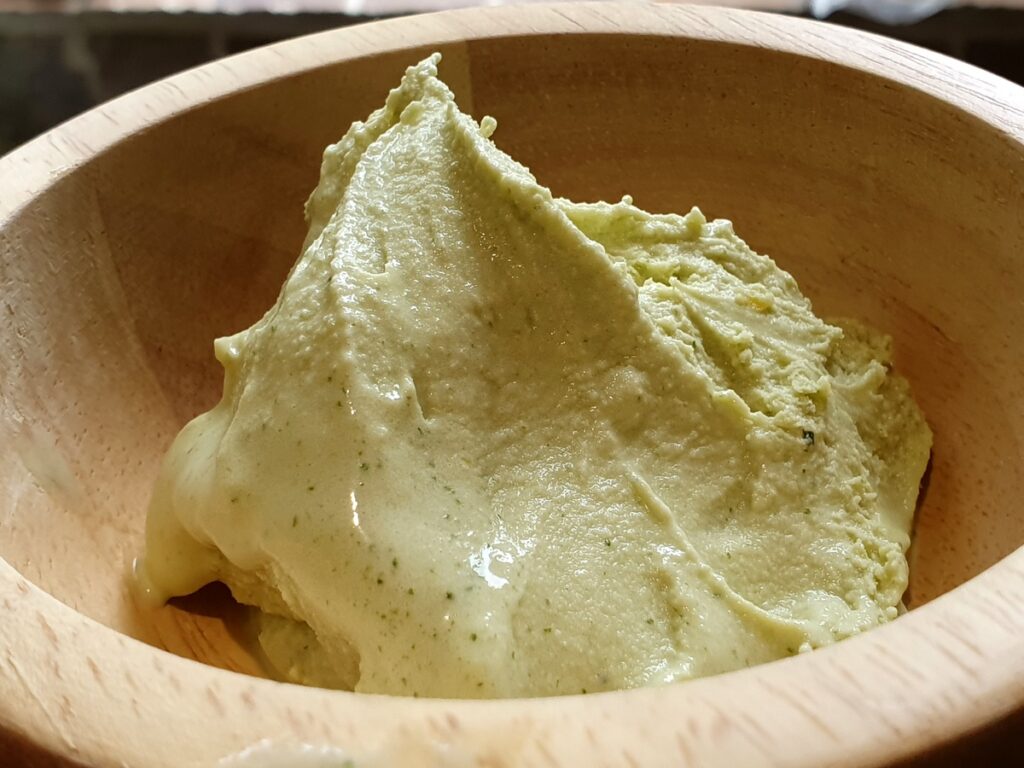
Yes, all these pictures are of freshly churned basil ice cream. Let me assure you that the ice cream will firm up in the freezer, and that it also will store well there for several days!
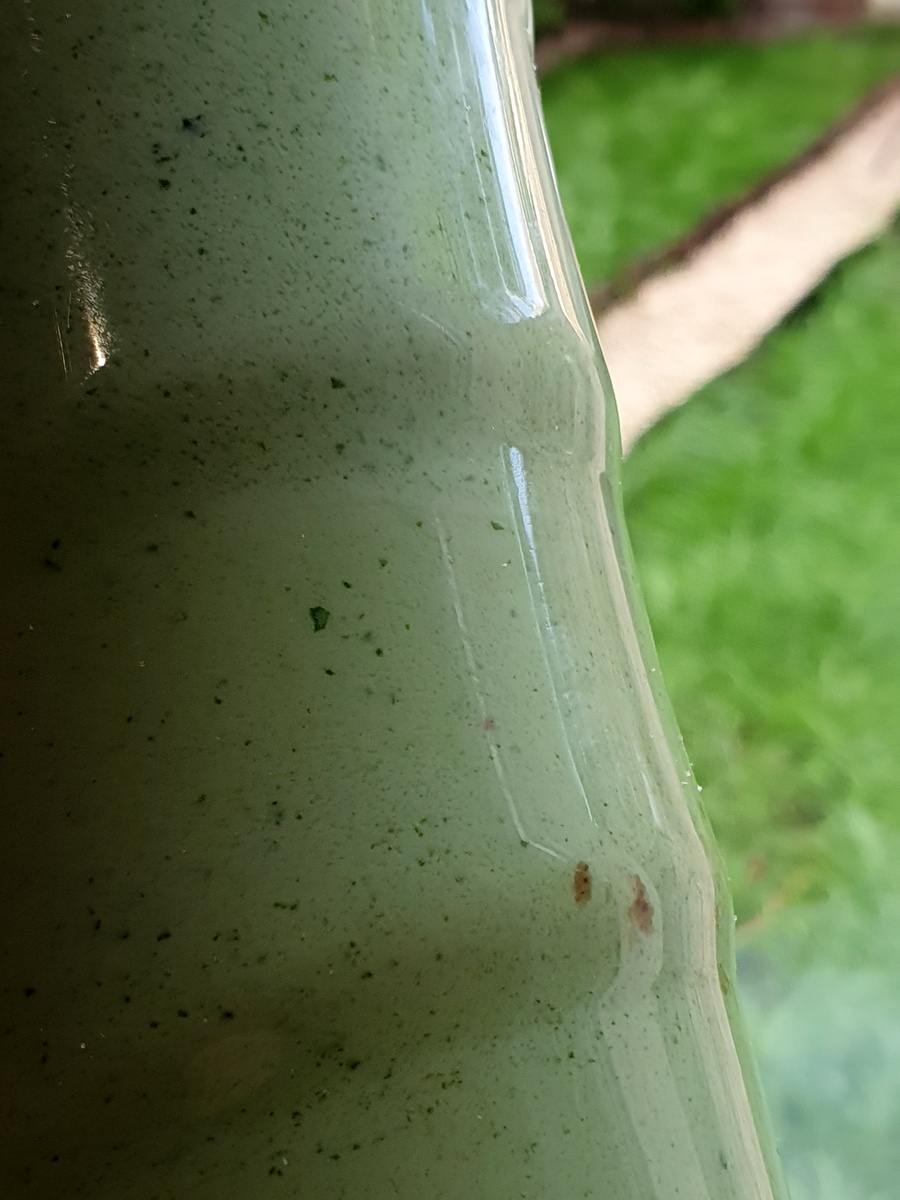
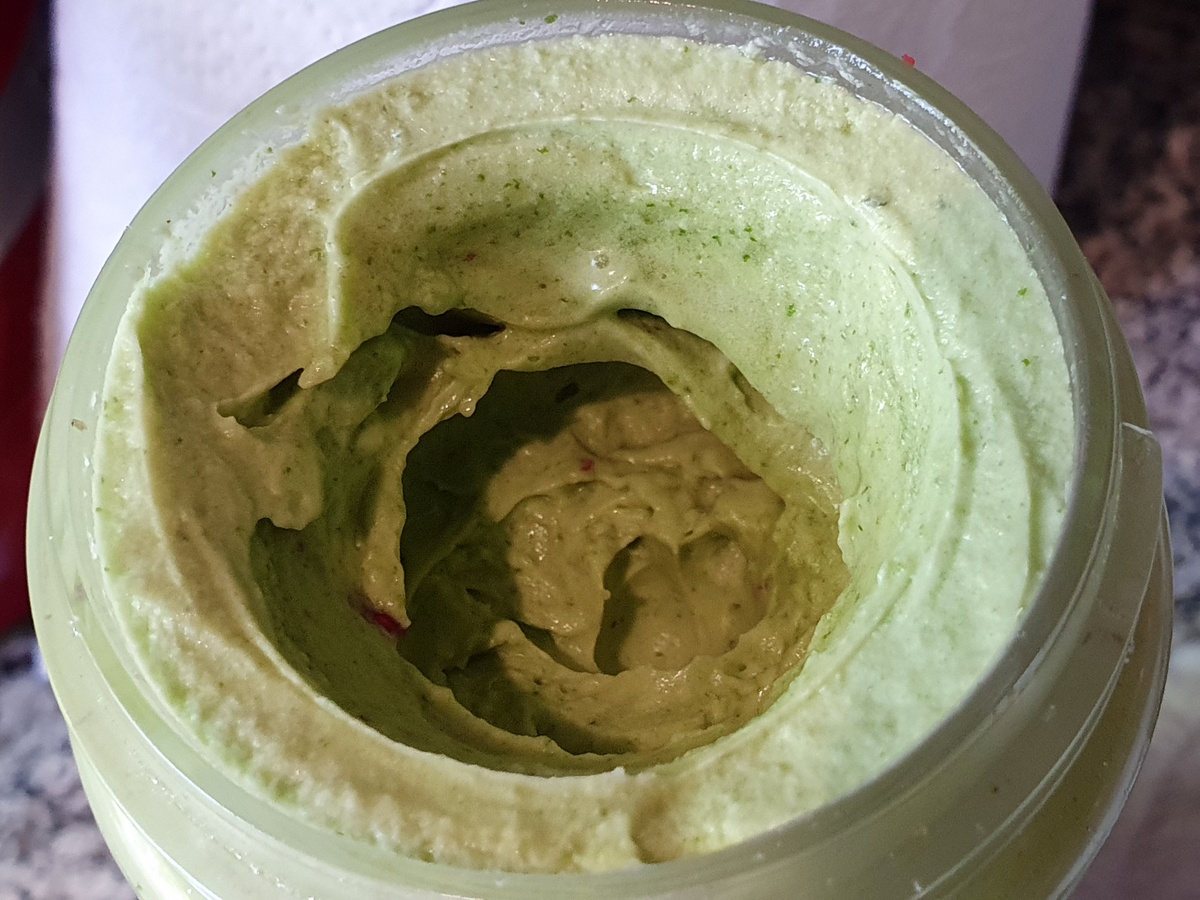
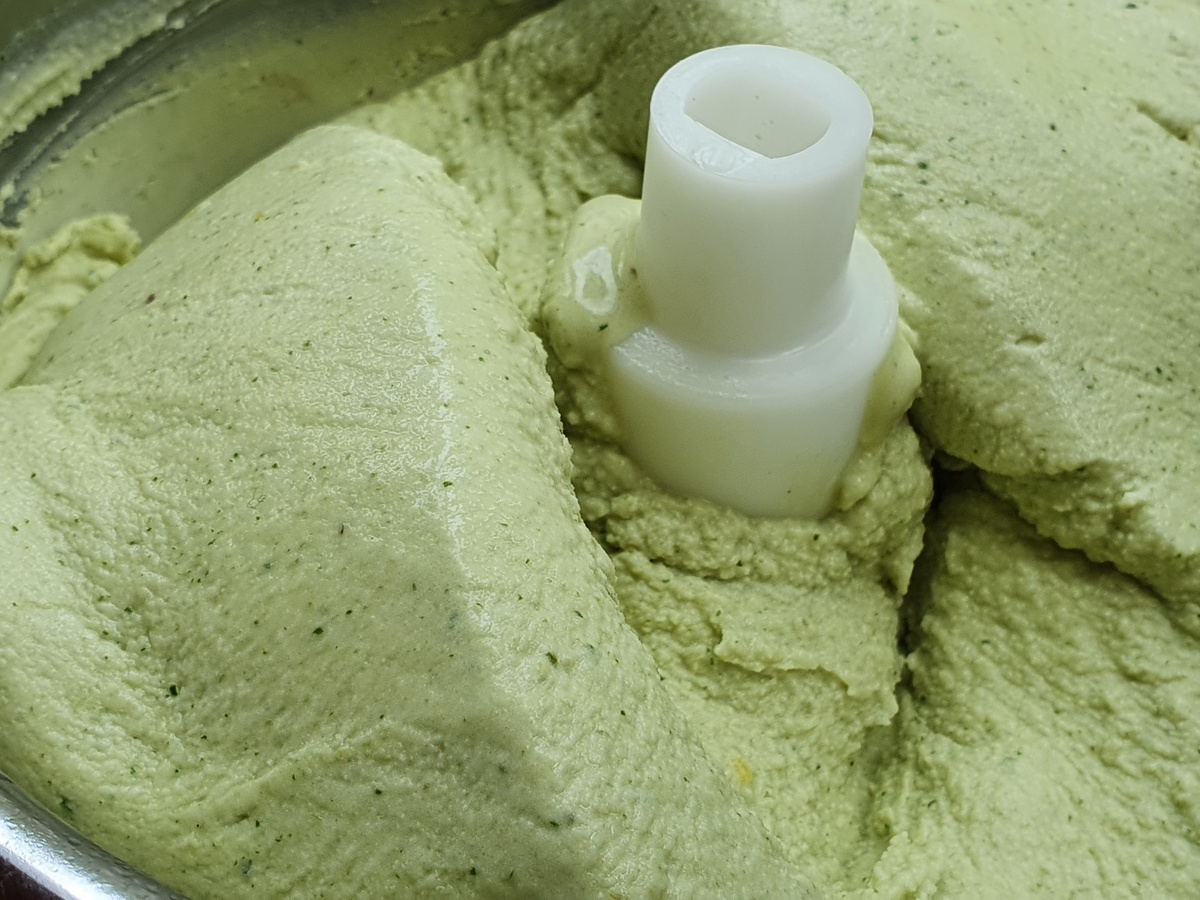
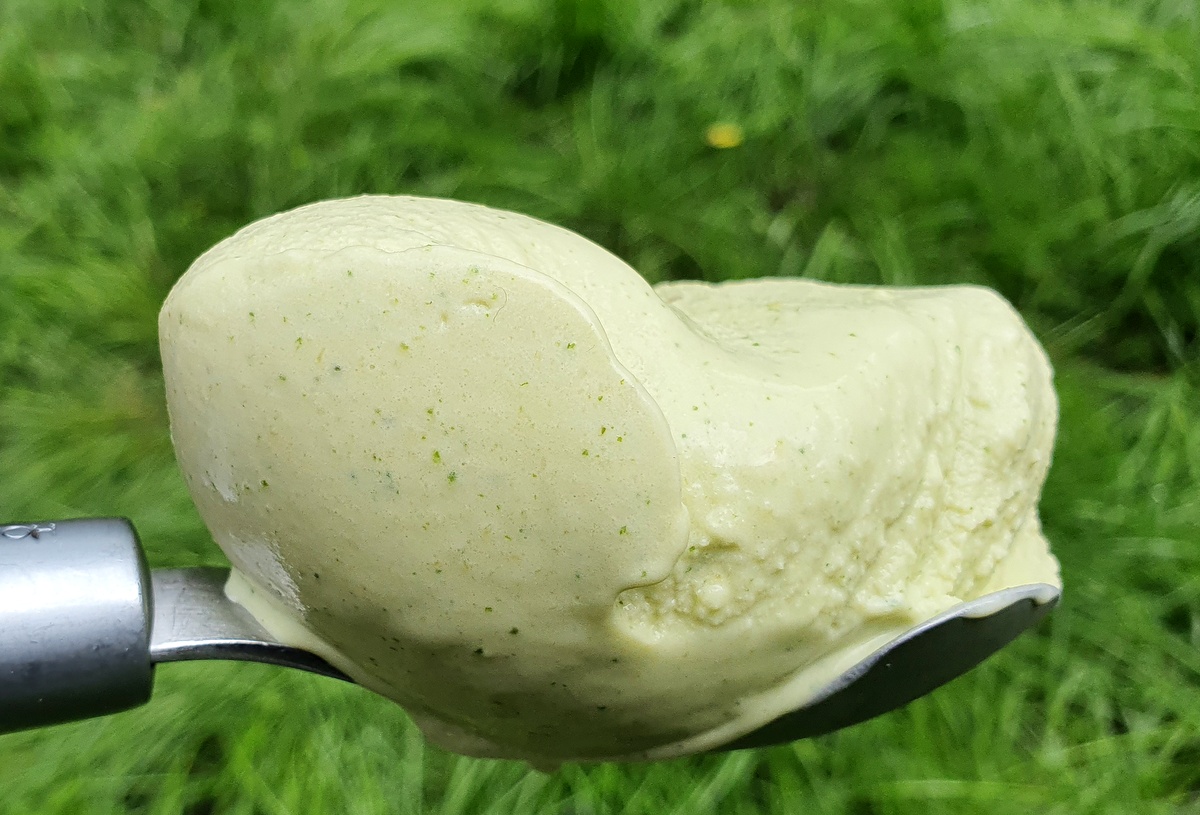

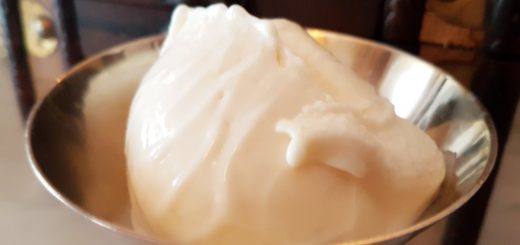
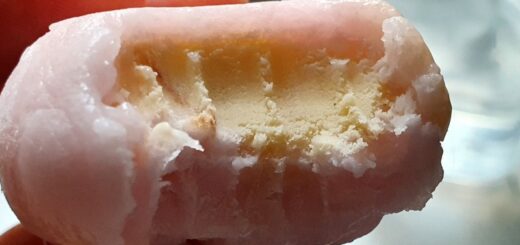


I read the blog and I love ice creams. Thank you for sharing.
yummy! i will try this soon. i recently made hojicha ice cream and it was delicious.
I made this and it never became ice cream. Just a cold basil cream soup.
Ruth, sorry to hear about your ‘soup experience’ since the recipe should work just fine. Did the custard cook as it should? And the ice cream machine freeze as it should?
My dad and I are making this now and the custard is currently chilling in the fridge. It already tasted so good, so I can’t wait to try the finished product!